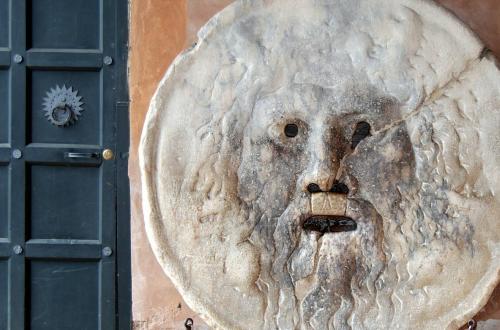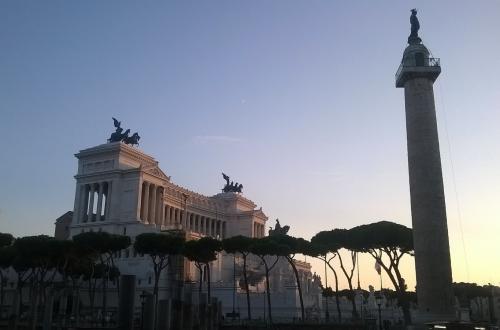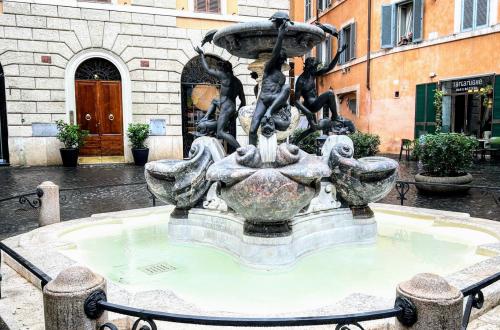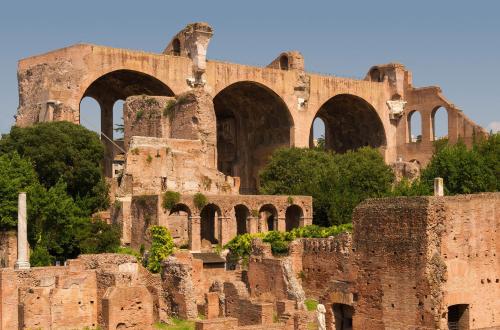L’Amphithéâtre Flavio (Colisée)

 Condividi
Condividi
On the left-hand side of the modern via Cassia, inside a public park, is the funerary monument erroneously called since the Middle Ages the Tomb of Nero.
The monument is located on the left of the via Nomentana, km 9,200, at Aguzzano. It owes it name to the Cecchini family, owner in the 16th century of the land where the building is located.
The building, which stands right in the middle of the square, was built by the Arcioni family, and later passed to the Capocci, a noble family from Viterbo.
Among the tall modern buildings of Piazza dei Consoli, on the left side coming from "Monte del Grano", is the ancient architectural complex of Quadraro, consisting of a massive quadrangular tower w
[...]Nel 1805, Papa Pio VII commissionò nuovi lavori di restauro al grande architetto Giuseppe Valadier che ne progettò il riassetto, sostituendo i ponti levatoi ed edi
[...]In the north corner of the garden in Piazza Vittorio Emanuele II there are the ruins of the lateritious monumental structure called, since the Middle Ages, Trophies of Mario due to the pre
[...]Il Venerabile Collegio Inglese è la più antica istituzione inglese al di fuori dell’Inghilterra ed ha ospitato nel corso della sua storia cardinali, monarchi, politici e intellettuali, tra cui Thom
[...]The statue is of a reclining Silenus which the populace called a baboon (“babuino”) for its ugliness recalling a monkey.
Delimitata alle due estremità da due delle piazze più celebri di Roma, piazza Venezia e piazza del Popolo, via del Corso è la vera arteria pulsante dello shopping capitolino.
[...]Remains of the property of Cardinal Giulio Alberoni (in 1722 he bought it as a vineyard and transformed it into his country villa).
Villa Alibert alle Mantellate, an eighteenth-century building with a backdrop of the green Gianicolo hill, has a C-shaped facade, with a backdrop and two slight side wings.
Villa Altieri was built at the end of the 17th century when Paluzzo Altieri, nephew of Pope Clement X, most probably commissioned architect Giovanni Antonio De Rossi to transform a large rustic far
[...]Villa Astalli was built in the 17th century in an area, the lower Esquiline, free of other buildings.
The villa is located on the northern slopes of the Janiculum Hill, almost in the Vatican field, on the same site where residential buildings were built in the first century AD that probably belonge
[...]The "Parco dei Gordiani", which takes its name from the imperial family (3rd c. AD) to which the property in the area is generally attributed, extends along both sides of via Prenestina.
The farmhouse was built in a place known as "della tedesca", just outside Largo dei Cavalleggieri, to become the residence of Pope Pius V Ghislieri, who went to live there before 1567.
At kilometre 1.6 of the Via Tiberina, on the slope of a hill on a tufaceous bank, today inside the Prima Porta cemetery, stands a Roman villa with residential, productive, thermal and mausoleum par
[...]The origin of the villa can be traced back to the pre-existing Villa Benedetta, commissioned by Monsignor Elpidio Benedetti, a friend and advisor of the Mazarin, who had it built according to the d
[...]Below the Ospedale San Giovanni, an excavation has brought to light a building dating from the 1st to the 4th century, which has been identified as the home of the mother of Emperor Marcus Aurelius
[...]This is the archaeological area between Via delle Vigne Nuove and Via Passo del Turchino, characterised by the presence of structures pertaining to a private villa located at about the sixth kilome
[...]The building is one of the most representative examples of the Umbertino style in Rome.
The present palazzina Vagnuzzi was built by restoring the so-called 'casino del Monte', dating from the 16th century, which had been part of the Villa Poniatowski since the 17th century.
Villa Gamberini was initially built in the expanding area that was being planned and parcelled out behind Roma Termini railway station.
Located within Villa Borghese, Villa Lubin was built in 1908 to be the headquarters of the International Institute of Agriculture.
The villa stands on the land where the 'Horti Luculliani' once stood, and the original structure dates back to the 16th century when the Orsini family, owners of the land, built a small palace with
[...]Situata nel cuore del quartiere Parioli, questa costruzione dei primi del '900 è stata riportata al suo raffinato splendore di un tempo, coniugando l'eleganza dei suoi ambienti con la calda atmosfe
[...]The villa was built from 1874 onwards for the beautiful Rosina Rosa Teresa Vercellana, the morganatic wife of Vittorio Emanuele II, Countess of Mirafiori and Fontanafredda.

 Condividi
Condividi

 Condividi
Condividi

 Condividi
Condividi

 Condividi
Condividi

 Condividi
Condividi

 Condividi
Condividi